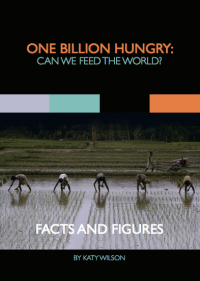In 2013 we brought you our six favourite TEDx talks about food security, which we followed with 9 more in 2014. This time, to celebrate World Environment Day on June 5th we bring you some of our favourite TED talks about climate change, biodiversity and the environment. We’d love for you to share your favourites and to hear your thoughts about our list on twitter using #TEDenvironment and our handle, @Ag4Impact
- Jonathan Drori: Why we’re storing billions of seeds highlights the importance of biodiversity for supporting life, and looks into the Millennium Seed bank where billions of seeds, including non-food plants, are being stored for posterity.
2. Cary Fowler: One seed at a time, protecting the future of food takes this idea further, by looking at the Svalbard Global Seed Vault that stores millions of specifically food-crop seeds. Cary describes biodiversity is the ‘raw material’ of agriculture and highlights the importance of storing these seeds for “whatever tomorrow may bring”














